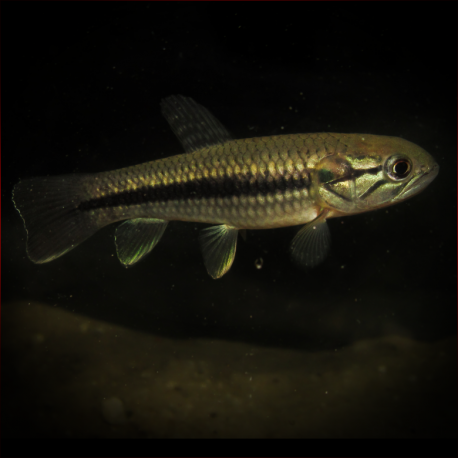More info
Datasheet
| Minimum Tank Size | 240 litres / 63.40 US gallons |
| Maximum Size | 40.0cm / 15.75inches |
| Temperature | 23°C / 73.40°F - 27°C / 80.60°F |
| Hardness | 2-25ºdH |
| pH | 5.5-7.5 |
General Description
The Gold Wolf Fish, scientifically known as Hoplerythrinus Unitaeniatus, is an ancient predatory species with a fearsome appearance, typically growing up to 40.0cm in size. It possesses a modified, highly vascularized swim bladder that acts as an accessory breathing organ, enabling it to survive in oxygen-deficient waters and even to take gulps of air at the water's surface.
Aquarium Setup
For optimal aquarium conditions, the Gold Wolf Fish thrives in a heavily planted tank with abundant floating vegetation to mimic its natural habitat. It is essential to provide hiding spots and refuges in the tank, ensuring tightly fitting covers to prevent escape. The water parameters should range between a hardness of 2-25°C, a pH of 5.5-7.5, and a temperature of 23-27°C (see table for quick reference).
Behaviour
Despite its aggressive nature towards conspecifics and smaller fish, the Gold Wolf Fish can coexist with similarly-sized species in a large tank. However, to observe its natural behavior, it is best kept alone as a single specimen to prevent conflicts and ensure its well-being.
Feeding and Diet
Feeding on insects and fish in the wild, the Gold Wolf Fish should be offered a diet of meaty foods such as earthworms, prawns, mussels, and white fish like lancefish. While some specimens may eventually accept dried foods, live feeder fish are not necessary and pose risks of introducing diseases or parasites to the tank.
Reproduction & Dimorphism
Reproduction of the Gold Wolf Fish has not been achieved in captivity. Differentiating between male and female specimens remains unconfirmed, though mature females may appear rounder in the belly compared to males.
Habitat and Distribution
In its natural habitat, the Gold Wolf Fish is found in small tributaries, swamps, marshes, and forest lake margins in South American countries such as Venezuela, Brazil, Argentina, and Panama. It prefers shallow waters or areas with surface vegetation for hunting and shelter.

